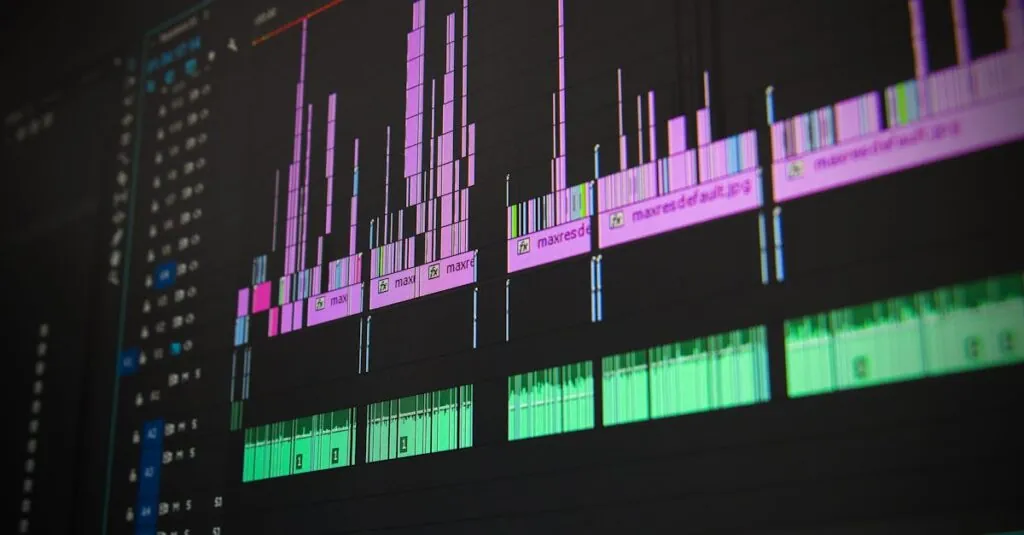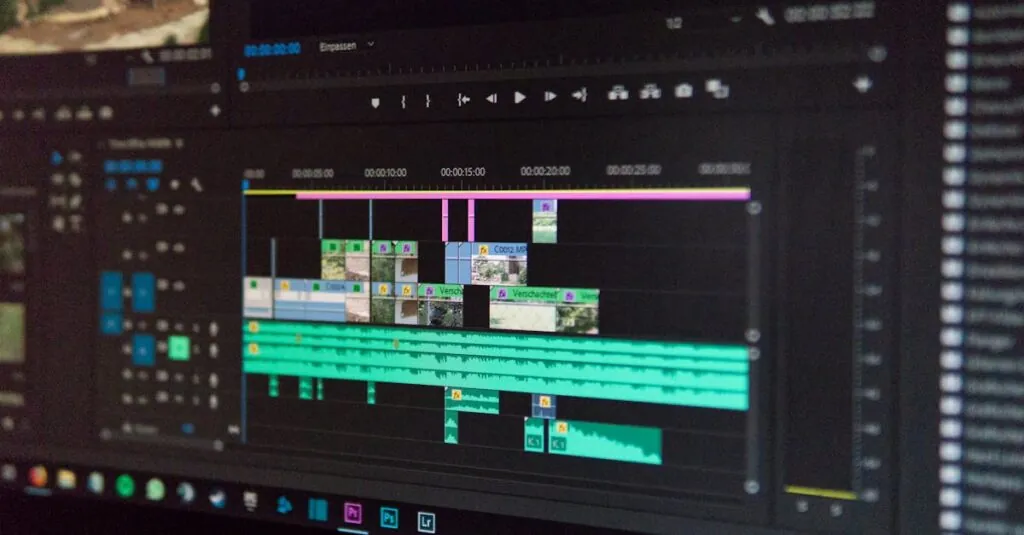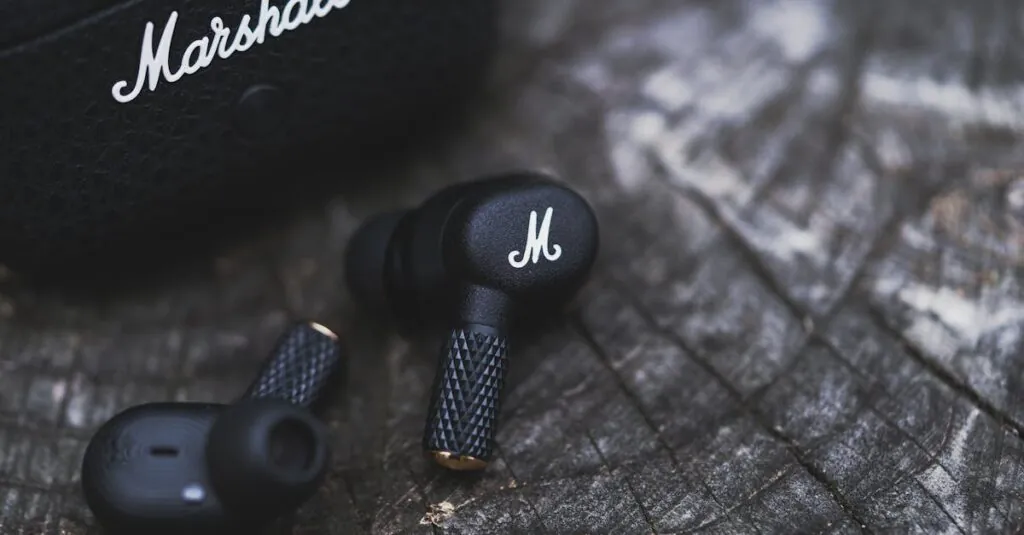In a world where news travels faster than a cat meme can go viral, the current media wave is making quite the splash. From TikTok trends to podcasts that feel like cozy chats with friends, the landscape of information is shifting dramatically. It’s not just about what’s trending; it’s about how people consume and engage with content like never before.
Overview of the Current Media Wave
Transformations in media consumption showcase significant shifts in audience engagement. Platforms like TikTok thrive with short, dynamic video content that resonates with younger generations. Traditional media outlets experience a decline as on-demand content gains traction.
Podcasts emerge as a favored medium, with over 50 million episodes available, allowing listeners to access diverse topics. Engagement increases as users select content tailored to their interests, fostering personal connections with creators.
Social media plays a pivotal role in shaping narratives. Platforms amplify user-generated content, making every individual a potential influencer. This democratization of information alters how audiences interact with news.
Data indicates significant growth in mobile media consumption, with users spending an average of 3.5 hours per day on their devices. Attention spans shorten, driving companies to create captivating, bite-sized content.
News organizations adapt by utilizing social media to distribute stories rapidly. Interactive formats encourage audience participation, further enhancing user experiences. Live-streaming events and Q&A sessions gain popularity, making viewers feel part of the broadcasting process.
As media becomes more integrated into daily life, public demand for transparency and authenticity increases. Audiences value content that reflects their personal values while challenging traditional norms in journalism and entertainment.
This evolving landscape underscores the relevance of adaptability in content creation. Information sharing occurs at an unprecedented rate, paving the way for ongoing transformation in the media industry.
Key Characteristics of the Current Media Wave
The current media wave reflects significant changes in how audiences consume and engage with content across various platforms.
Digital Transformation
Digital transformation drives the media wave. Platforms, such as TikTok and podcasts, offer innovative user experiences. Current data shows that users now spend 3.5 hours daily on mobile devices. This trend highlights shorter attention spans, prompting creators to develop engaging, bite-sized content. Adapting to on-demand preferences, many news organizations leverage technology for story distribution. They utilize tools like live streaming and interactive formats, enhancing audience participation. Grassroots content creation emerges as a powerful force, enabling anyone to share stories. Each innovation makes information more accessible, reflecting the growing importance of digital channels in everyday communication.
Social Media Influence
Social media significantly influences current media dynamics. It amplifies user-generated content, reshaping narrative structures. News exposure now hinges on shares and likes, creating a mastery of audience engagement strategies. Data indicates that current shifts in online interactions lead to more personalized experiences. Platforms encourage real-time feedback through comments and sharing dynamics. Social media fosters connections between audiences and creators, changing how people perceive information. These platforms democratize the storytelling process, making various voices heard. Consequently, transparency and authenticity become priorities for both content creators and consumers.
Impact on Society
The current media wave significantly reshapes societal interactions and cultural norms. Changes in communication happen rapidly as platforms evolve.
Changes in Communication
Social media promotes immediacy in information sharing. Users engage with news stories instantly, creating a culture of real-time reactions. Engagement often leads to open dialogue, with audiences participating through comments and shares. This interactive communication model nurtures a sense of community among users. In addition, mobile technology heightens accessibility, allowing individuals to connect regardless of location. Data shows users spend an average of 3.5 hours daily on devices, reflecting a preference for digital engagement over traditional methods. This shift compels content creators to prioritize brevity and impact, catering to dwindling attention spans.
Cultural Shifts
Cultural norms are evolving due to the influence of media consumption. Diverse perspectives thrive in podcasts and user-generated content, fostering inclusivity. Audiences increasingly seek media that aligns with personal values and social movements. This demand encourages creators to challenge mainstream narratives. Users on platforms like TikTok advocate for social justice, showcasing the power of grassroots activism. Authenticity matters more now than ever, pushing creators to present genuine experiences. Furthermore, trends reflect a growing importance on mental health and personal well-being, emphasizing the role media plays in shaping collective awareness. Overall, the cultural landscape adapts swiftly, responding to the public’s desire for meaning and connection.
Challenges Faced by Traditional Media
Declining audience engagement presents a major obstacle for traditional media outlets. Younger generations prefer bite-sized content found on platforms like TikTok, causing significant shifts in viewership. Competing with the immediacy of social media makes it difficult for news organizations to retain relevance.
Changes in consumption habits lead to shorter attention spans among audiences. Research shows users spend an average of 3.5 hours daily on mobile devices, prioritizing quick and engaging information. As a result, longer news pieces often fail to capture interest, diminishing traditional media’s impact.
Generating revenue proves challenging as advertisers shift focus toward digital platforms. Erosion of trust in traditional journalism exacerbates this issue, with audiences questioning the authenticity of news sources. Today’s consumers seek transparency, favoring content from influencers or grassroots creators over establishment outlets.
Incorporating interactivity poses another hurdle. While traditional media attempts to engage viewers through Q&A sessions or live-streaming events, audiences frequently turn to social media for real-time interaction. Building community connections becomes essential yet difficult.
Lastly, adapting to digital landscapes requires significant investment in technology and talent. Media organizations often struggle with these shifts, lagging behind nimble digital-native platforms. Transforming workflows to embrace innovation remains vital to overcome these systemic issues.
Navigating these challenges demands a re-evaluation of strategies by traditional media. Recognizing the evolving preferences of consumers can lead to more effective outreach methods. Focusing on authenticity and user engagement offers a pathway towards revitalizing trust and interest in conventional media channels.
Future Trends in the Current Media Wave
The current media wave continues to evolve, influenced by rapid technological advancements and shifting audience preferences. User-generated content becomes more prominent, as individuals increasingly contribute to the media landscape, offering diverse perspectives and fostering inclusivity. Platforms like TikTok and Instagram drive this trend by encouraging creativity and real-time engagement.
Data indicates that mobile media consumption shows no signs of slowing, with users spending an average of 3.5 hours daily on their devices. Attention spans shrink as audiences favor captivating, bite-sized content. Traditional media organizations struggle to capture interest, as longer news pieces often fail to resonate with younger viewers.
Interaction remains at the heart of effective content creation. News outlets adapt by integrating audience participation through live streaming and interactive formats. Audiences seek transparent connections with creators, valuing authentic stories that reflect their values. Brands and media organizations must prioritize authenticity to build trust and loyalty among consumers.
Diverse multimedia formats, especially podcasts, continue to gain traction. Over 50 million podcast episodes provide topics that attract a broad audience, allowing creators to engage listeners on personal levels. Such intimacy strengthens audience attachment, further driving the desire for relatable content.
Cultural norms shift as social media platforms amplify voices previously underrepresented in mainstream narratives. The demand for authenticity and mental health awareness influences the type of content that gains popularity. Creators mirror societal values, championing inclusivity and fostering community discussions.
As traditional media grapples with declining engagement, advertisers shift their focus. Allocating budgets toward digital platforms allows brands to connect with audiences on more familiar grounds. Success hinges on the ability to embrace an interactive model while maintaining credibility and relevance in a crowded media landscape.
The current media wave is reshaping how audiences engage with content. As platforms like TikTok and podcasts gain popularity, traditional media faces significant challenges in retaining relevance. The demand for authenticity and real-time interaction is driving content creators to prioritize transparency and connection.
Mobile technology continues to enhance accessibility, allowing diverse voices to flourish and fostering community among users. This evolving landscape emphasizes the need for adaptability in media strategies. Organizations that embrace these changes will find opportunities to connect with audiences in meaningful ways, ensuring they remain relevant in an ever-shifting digital environment. The future of media lies in understanding and responding to the dynamic preferences of today’s consumers.













